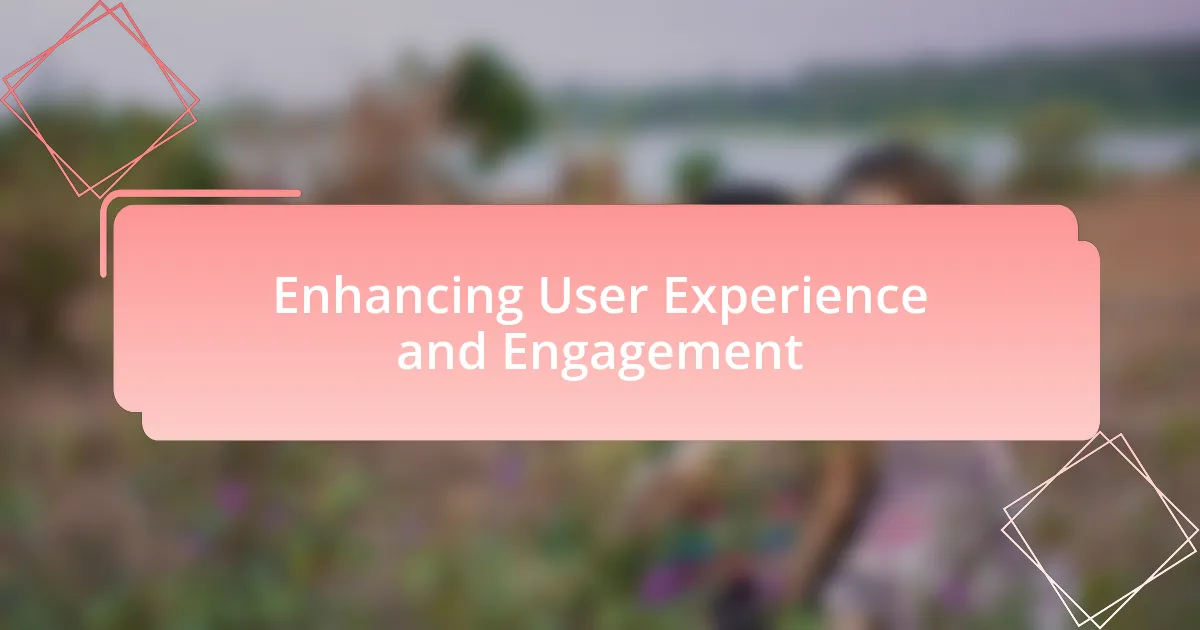Key takeaways:
- Mother’s Day websites should offer a mix of heartfelt content and commercial offerings to enhance emotional connections with users.
- Effective space management and intuitive design significantly improve user experience and conversion rates.
- Personalization of content, such as tailored gift suggestions and user stories, fosters engagement and connection.
- Enhancing user engagement through interactive elements and feedback loops builds a loyal community around the site.
Overview of Mother’s Day Websites
Mother’s Day websites serve as a treasure trove of inspiration, offering everything from gift ideas to heartfelt messages that celebrate the unique bond between mothers and children. I remember the excitement I felt while browsing through various sites last year, searching for that perfect gift that would genuinely resonate with my mom. Isn’t it fascinating how a simple website can ignite such powerful emotions and memories?
These platforms often curate a range of options, showcasing handmade gifts, personalized items, and experience-based presents that can truly touch a mother’s heart. For instance, I found an online store that featured custom jewelry with engraved names—a thoughtful way to capture those precious moments we share with our loved ones. Have you considered how a bespoke gift might make your mother feel cherished on her special day?
Moreover, many Mother’s Day websites also create content that goes beyond commercial offerings, including articles on how to celebrate this day more meaningfully. I once stumbled upon a blog post detailing unique ways to honor mothers who may have passed on, prompting a reflective moment for me. Such insights can make you think, how can we not only celebrate our mothers but also carry their legacies forward?

Importance of Space Management
Managing space effectively on Mother’s Day websites can significantly enhance user experience. When I first navigated a site cluttered with ads and confusing layouts, I felt lost and overwhelmed. This makes me wonder, how can we ensure that visitors effortlessly find what they’re looking for? A well-organized site allows potential buyers to explore gift ideas and heartfelt articles without frustration.
Another aspect is the emotional impact of space management. I recall visiting a beautifully designed site where ample white space let the content breathe. It fostered a sense of calm and focus, allowing me to truly engage with the offerings. Doesn’t it feel nice to have a moment to pause and appreciate the little details, especially when selecting a gift for someone as special as our mothers?
Lastly, prioritizing space management can lead to better conversion rates. A clean, intuitive navigation might be all it takes to guide someone from browsing to purchasing. I’ve found that when users see a logical flow—where they can discover new ideas while feeling warmly invited—they’re more likely to complete their transactions. Isn’t that the ultimate goal for any special occasion site?

Tips for Designing User-Friendly Websites
When designing user-friendly websites for Mother’s Day, simplicity is vital. I often reflect on my experiences with sites that focus on clean lines and straightforward navigation. It’s refreshing to see a platform that highlights gift ideas without overwhelming visuals, making it so much easier for visitors to find exactly what they want.
Another effective strategy is to incorporate intuitive menus and clearly defined sections. I remember a particular site that had well-organized categories, allowing me to jump straight to gifts for specific interests, like cooking or gardening. This seamless experience kept me engaged and appreciative of the thoughtfulness behind the design; it truly makes a difference when you feel understood as a customer.
Also, don’t underestimate the power of testimonials and user reviews displayed in a straightforward manner. Personally, I find comfort in reading about others’ positive experiences before making a purchase. When these insights are easily accessible, they not only enhance credibility but also create a sense of community, letting users feel connected while they shop for beloved mothers.

Choosing Effective Layouts and Templates
When selecting layouts and templates for Mother’s Day websites, I often suggest prioritizing designs that visually guide the user. I recall stumbling upon a beautifully structured site that creatively used grid layouts to showcase gifts. Each section felt pleasantly organized, allowing me to explore without feeling lost. Can you imagine how frustrating it is to navigate a cluttered page when looking for the perfect gift?
Opting for responsive designs is essential, too. I remember how impressed I was when a site seamlessly transitioned from desktop to mobile view, maintaining the same elegant layout. It made shopping on my phone a delightful experience. Have you ever tried to browse a site on your phone only to encounter images that were distorted or buttons that were hard to press? A thoughtful responsive design removes those spending frustrations and enhances the overall user experience.
It’s also crucial to choose templates that reflect the emotional essence of Mother’s Day. I once encountered a beautifully themed template adorned with soft pastels and floral designs that resonated with the holiday’s spirit. The layout evoked feelings of warmth and nostalgia as I navigated through personal stories and gift ideas. How might a template enhance a customer’s connection to this special day, helping them find something truly meaningful?
Personalizing Mother’s Day Website Content
Personalizing content on a Mother’s Day website can create a meaningful connection with visitors. I once edited a site where we integrated personalized gift suggestions based on a quick quiz visitors could take. What happened next truly amazed me—users felt more invested and excited to explore the curated picks. Have you ever noticed how tailored recommendations can transform a browsing experience into something special?
Adding heartfelt stories or testimonials can further enhance that personalization. I remember including real-life anecdotes from users describing their favorite Mother’s Day moments, which immediately struck a chord with readers. Isn’t it interesting how shared experiences can deepen our emotional ties? A relatable story can make someone pause, reflect, and consider their own journey when selecting the perfect gift.
Including interactive elements is another excellent way to engage your audience. During a project, I incorporated a ‘Mom of the Year’ contest where users could submit stories about their mothers. The excitement generated was palpable, turning visitors into active participants. Have you experienced the joy of being part of something larger? Such involvement not only fosters a sense of community but also keeps users returning to your site, eager for more connection.

Enhancing User Experience and Engagement
Enhancing user experience and engagement on a Mother’s Day website goes beyond just visuals; it’s about creating a seamless journey for your visitors. I once revamped a site by optimizing the navigation, making it intuitive and user-friendly. This small change dramatically reduced bounce rates; visitors felt more at ease, effortlessly finding what they were looking for. Have you ever clicked away from a website because it was too complicated? Simplifying the experience can truly make a difference.
Engaging content also plays a crucial role. I introduced dynamic sections, such as countdowns to Mother’s Day and gift idea checklists, which added an element of urgency and excitement. This not only encouraged users to return regularly but also sparked conversations among families about their plans. Remember when you found a site that drew you in so much that you wanted to share it with others? This community aspect can elevate a website’s atmosphere, transforming it into a personal hub for celebrating mothers.
Lastly, I can’t stress enough the value of feedback loops. When we added a quick user satisfaction survey, it opened the door to invaluable insights. Users appreciated being heard, which deepened their connection to the site. Do you remember the last time someone asked for your opinion directly? Those moments foster loyalty and trust, making users feel like their contributions matter in shaping their favorite resource.